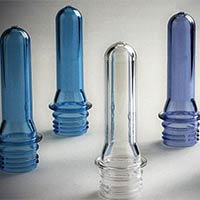

The control and improved performance of light propagation using photonic crystals fibers (PCF) developed in 1996 by Philip Russel opened the doors for research in more complex fiber internal functional structures. Moreover, fiber optic sensors (FOS) are used for a wide variety of biomedical, oil and gas, marine, architectural, chemical, and aerospace applications. These two discoveries sprouted decades of optical and material engineering improvements leading to today’s efficient fibers, enabling high-speed telecommunication and data storage across kilometers of distance around the world, such as the 25,000-km-long trans-Pacific undersea cable (TPC) completed in 1996. In 1842, Jean-Daniel Colladon, a Swiss physicist, showed that light could be guided internally through a water jet. Furthermore, it will boost innovation in 3D printing, extending the digital manufacturing approach into the nanoelectronics realm.Īlthough glass-drawn fibers date back to the Roman times, the first functional optical fibers were manufactured in 1792 by the French Chappe brothers for communication purposes. We believe that this method will deliver a new class of durable, low cost, pervasive fiber devices, and sensors, enabling integration of fabrics met with human-made objects, such as furniture and apparel, into the Internet of Things (IoT). This methodology, dubbed “VLSI for Fibers,” or “VLSI-Fi,” combines 3D printing of preforms, a thermal draw of fibers, and post-draw assembly of fiber-embedded integrated devices by means of material-selective spatially coherent capillary breakup of the fiber cores. We develop a versatile hybrid-fabrication methodology that assembles in-fiber material architectures typical to integrated microelectronic devices and systems in silica, silicon, and high-temperature metals. Our group substantiates a universal in-fiber manufacturing of logic circuits and sensory systems analogous to very large-scale integration (VLSI), which enabled the emergence of the modern microprocessor.


Current fiber-sensor fabrication approaches either are non-scalable or limit the choice of semiconductors to the amorphous ones, such as chalcogenide glasses, inferior to silicon in their electronic performance, resulting in limited bandwidth and sensitivity of such sensors when compared to a standard silicon photodiode. However, the realization of high-performance electronics in a fiber remains a demanding challenge due to the elusiveness of a material processing strategy that would allow the wrapping of devices made in crystalline semiconductors, such as silicon, into a fiber in an ordered, addressable, and scalable manner. Optoelectronics realized in a fiber could revolutionize multiple application areas, including biosynthetic and wearable electronics, environmental sensing, and energy harvesting. Fibers are ubiquitous and usually passive.


 0 kommentar(er)
0 kommentar(er)
